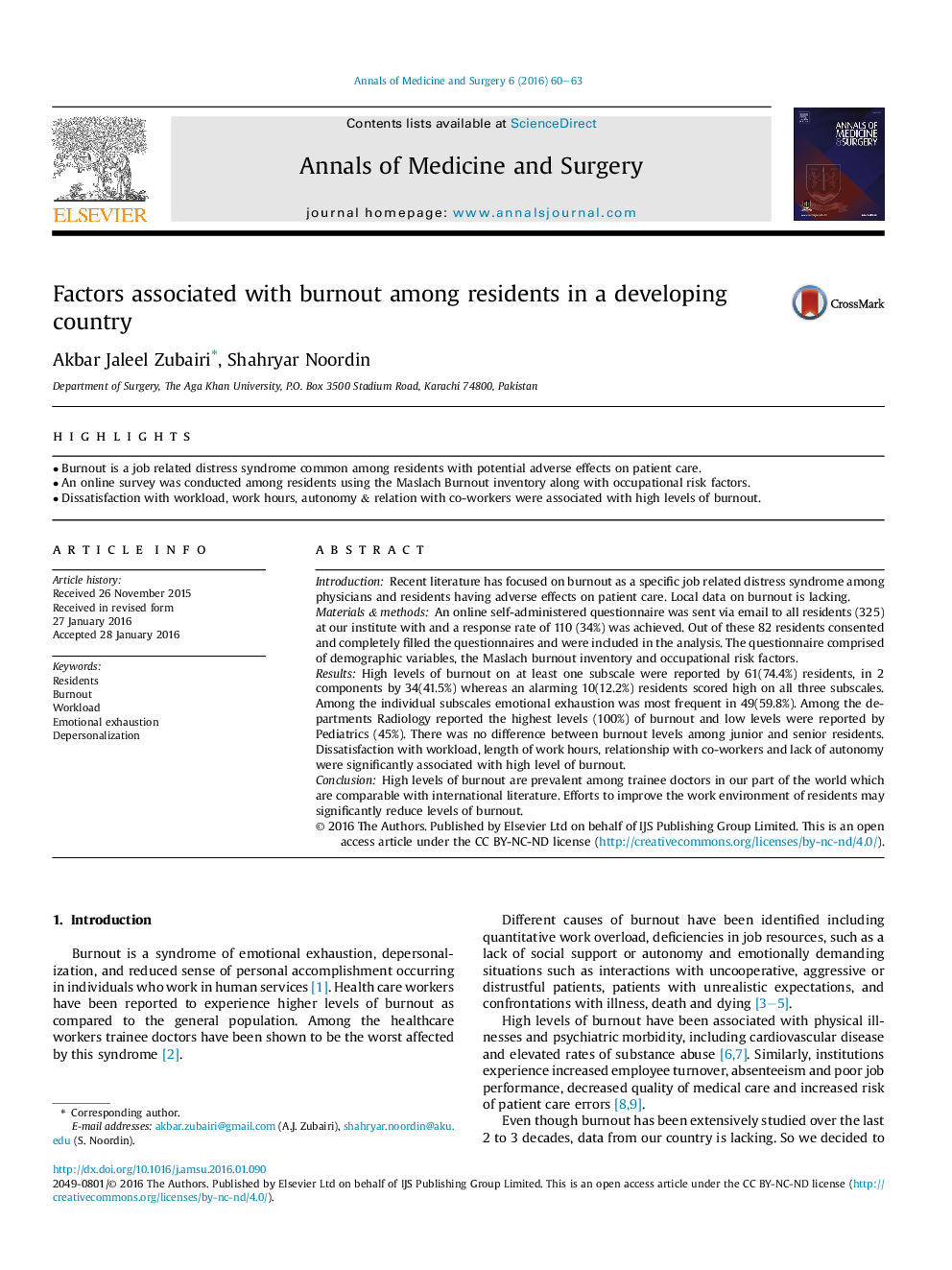| Article ID | Journal | Published Year | Pages | File Type |
|---|---|---|---|---|
| 4195456 | Annals of Medicine and Surgery | 2016 | 4 Pages |
•Burnout is a job related distress syndrome common among residents with potential adverse effects on patient care.•An online survey was conducted among residents using the Maslach Burnout inventory along with occupational risk factors.•Dissatisfaction with workload, work hours, autonomy & relation with co-workers were associated with high levels of burnout.
IntroductionRecent literature has focused on burnout as a specific job related distress syndrome among physicians and residents having adverse effects on patient care. Local data on burnout is lacking.Materials & methodsAn online self-administered questionnaire was sent via email to all residents (325) at our institute with and a response rate of 110 (34%) was achieved. Out of these 82 residents consented and completely filled the questionnaires and were included in the analysis. The questionnaire comprised of demographic variables, the Maslach burnout inventory and occupational risk factors.ResultsHigh levels of burnout on at least one subscale were reported by 61(74.4%) residents, in 2 components by 34(41.5%) whereas an alarming 10(12.2%) residents scored high on all three subscales. Among the individual subscales emotional exhaustion was most frequent in 49(59.8%). Among the departments Radiology reported the highest levels (100%) of burnout and low levels were reported by Pediatrics (45%). There was no difference between burnout levels among junior and senior residents. Dissatisfaction with workload, length of work hours, relationship with co-workers and lack of autonomy were significantly associated with high level of burnout.ConclusionHigh levels of burnout are prevalent among trainee doctors in our part of the world which are comparable with international literature. Efforts to improve the work environment of residents may significantly reduce levels of burnout.
